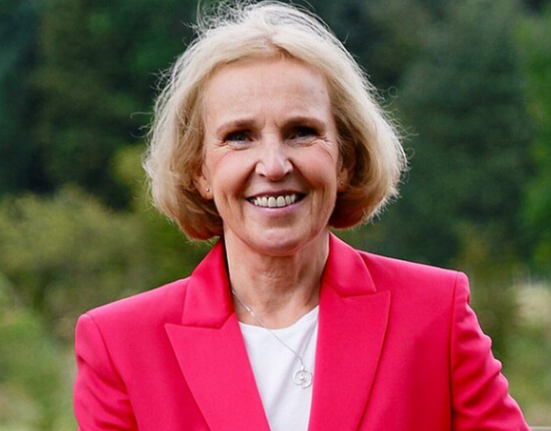The name is derived from old English – Chine came from “cinu”, meaning a ravine, and ham was a village in olden days.
Chineham was occupied by settlers as far back as 2,000BC and then by Anglo-Saxon residents in the period 600 to 800AD.
READ MORE: Flashback: The Methodist Church demolished to make way for new shopping centre
Excavations in the area have revealed many items relating to these encampments and a few have been found dating back to another settlement by primitive people during the Belgic invasion of Wessex in 55BC.
Old records show that King Edward the Confessor, who reigned during the 11th century, owned much of the land, which was then passed on to the Norman Baron, Hugh de Port, who had some 55 “lordships” in Hampshire – these being various areas of land.
By the 13th century, a church was sited at Chineham, and a moat was built, both of which were later abandoned.
The church was a small building adjoining the Manor House, which was next to “Chapel” field. The chapel was there until the late 19th century
One incident of that time was when Richard de Chineham, in 1317, had “the houses and goods” in his manor burnt by incendiaries. However, no reason is given.
The manor passed to the Brocas family of Beaurepaire, then later to the Warblington family of Sherfield, then the Puttenhams acquired the land.
In 1511, Sir George Puttenham was ordered to fill up a chalk pit as it had become dangerous to people passing by.
Further ownership of the land took place by various titled people, including the Earls of Dartmouth in the 18th century. They sold it to Lord Bolton and his family for an extended period.
About that time, Chineham House was built and this elegant building, with its two storeys and attic, three-bay frontage, hipped slate roof, and six-panelled front door, has lasted through to the present day.
Unfortunately, it became a victim of neglect and was damaged by fire in 1990, but was repaired two years later.
Another building of the 18th century is the Chineham Farmhouse, and this, with the previously mentioned house, is protected as a listed building under the Town and Country Planning Acts.
Back in the early 20th century, a rifle range was set up at Chineham Farm for the pleasure of local gentry.
An old building erected along the Reading Road in the 19th century was a toll house and gate, to collect money from travellers, including stagecoaches, who travelled along that stretch of road.
The house still exists but is now cut off from Chineham by the A33 bypass, which was built in the late 1970s.
Like Basingstoke, Chineham stayed the same size for centuries and even up until the end of the 19th century the village consisted of the farm and a few houses and cottages.
By the late 1950s the area was home to 200 people in 70 dwellings, these being mostly bungalows, with some wooden shacks and railway cottages along the Reading Road.
When the Basingstoke Town Development Scheme was announced in 1962, the villagers never realised that the expansion of the town would affect them until 1964 when Chineham Farm was purchased by the council for development into housing, and the farmwork came to an end upon the farmer, Mr Snook, leaving in October 1965.
In 1977, the Chineham District Plan was announced and it included the purchase of land for around 3,800 homes, a shopping centre and woodland park.
Planning permission was granted in 1983 for 900 homes in the area between Reading Road and Lychpit and, within a year, much of the construction was completed.
By June 1984, the Chineham Shopping Centre was open, with a library and 23 stores and shops, including Tesco, Bejam, Martins, Baxters and Milwards.
SEE ALSO: Flashback: Workers paid in flour instead of money by farmers in Overton
Facilities for the public also included Christ Church, built in 1986 to replace a small wooden church, while in 1982, the Four Lanes school had been built in readiness for the increase in children in the area. The tennis centre at Centrecourt was completed in 1989.
In 1991, the local council sold land at Chineham to the Downland Housing Association, at less than the market value, to enable 40 lowcost homes to be built.
Consequently, Great Binfields Primary School was built in 2001 and opened in September that year to take more than 200 children.
During the building excavations, primitive remains of the early settlers in Chineham were unearthed… and so we have returned to the start of how Chineham first began!







